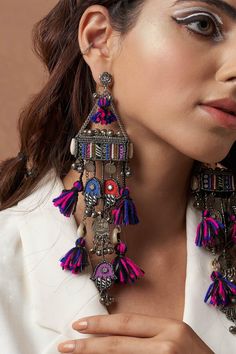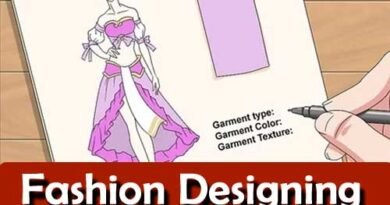Macrame Jhumar 02
Introduction: Macramé, an ancient craft that involves knotting cords or threads to create intricate patterns, has made its mark in fashion through various forms, including accessories like the macramé jhumar. A jhumar typically refers to a hanging ornament or chandelier, but in fashion, it has taken on a modern and artistic twist through macramé techniques. Macramé jhumars in fashion are a unique blend of artistry, craftsmanship, and cultural influences, often used in accessories, clothing embellishments, and even jewelry.
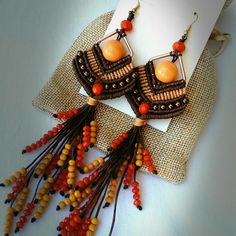
This class note will cover the origins of macramé, the role of macramé jhumar in fashion, different applications, materials used, the technique behind creating macramé jhumar, and its significance in the fashion industry today.
What is Macramé?
Macramé is a textile art form that dates back to the 13th century, where it was widely used by Arab weavers. The term “macramé” is derived from the Arabic word “migramah,” which means fringe, as the technique originally involved knotting the excess fabric or threads at the ends of woven fabrics. The craft spread to Europe, especially during the Victorian era, where it became popular for creating decorative household items.
In the modern era, macramé has been revived and integrated into fashion, where it is used to create intricate designs for clothing, accessories, and home décor. The method typically involves creating decorative knots using materials such as cotton, linen, hemp, jute, or leather cords.
What is a Jhumar?
A jhumar is traditionally a decorative hanging ornament used in various cultures, especially in South Asia, to adorn homes, bridal headpieces, or jewelry. In fashion, the jhumar has evolved into a stylish accessory or embellishment. When combined with macramé, it forms a unique fashion statement, known for its intricate patterns and bohemian appeal.
Macramé Jhumar in Fashion:
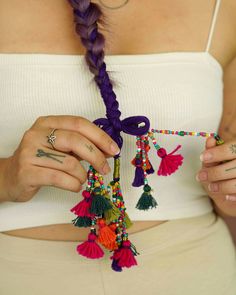
- Fashion Accessory:
- Macramé jhumars are often used in jewelry design, particularly in earrings, necklaces, and even headpieces. They serve as statement pieces due to their intricate designs and hand-made nature.
- These pieces are lightweight yet bold, often featuring fringes, beads, or stones that add to the appeal of the design. They can be customized based on color, shape, and complexity, making them versatile for different fashion styles.
- Clothing Embellishment:
- Macramé jhumars can be added to garments as embellishments. Designers often use macramé jhumar patterns to create decorative sleeves, necklines, or hemlines on dresses, tunics, and tops.
- The 3D texture and handcrafted nature of macramé jhumars provide a unique boho-chic look, which is particularly popular in resort wear, summer collections, and festival fashion.
- Handbags and Footwear:
- Macramé jhumars are commonly incorporated into accessories such as handbags, where they may be used as tassels or embellishments. These macramé elements add texture and a handcrafted appeal to the overall design.
- Similarly, in footwear, macramé jhumar designs are used to embellish sandals, particularly in bohemian or beachwear collections. The combination of natural fibers and intricate knotting makes for unique and eye-catching footwear.
- Runway and Couture:
- High fashion designers have embraced macramé in their runway collections, using it to craft avant-garde macramé jhumar-inspired pieces. These designs push the boundaries of traditional fashion, creating larger, more elaborate macramé patterns that adorn dresses, headpieces, and even entire outfits.
- Cultural Significance in Fashion:
- Macramé jhumar elements often draw inspiration from traditional crafting techniques in various cultures. In India, for example, jhumars are a staple in bridal fashion, used in jewelry and headpieces, while the macramé technique introduces a contemporary yet handcrafted touch to these age-old traditions.
- The use of macramé jhumar in fashion helps preserve and modernize traditional crafts, blending them into global fashion trends.
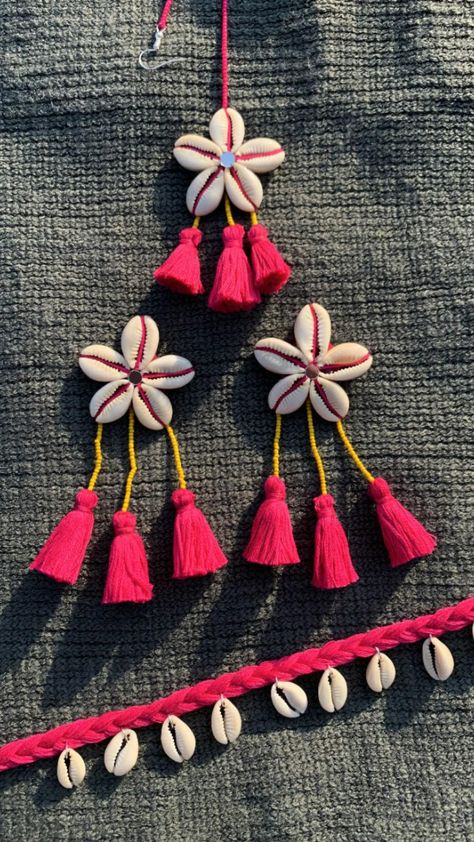
Materials Used in Macramé Jhumar:
The beauty of macramé jhumar lies in the materials chosen for its construction. Each material has a different impact on the look, feel, and overall aesthetic of the final product. Here are some common materials used in creating macramé jhumar in fashion:
- Cotton Cord: Soft, flexible, and easy to manipulate, cotton is the most commonly used material for macramé projects. Cotton cord is available in various thicknesses, making it suitable for both fine and large-scale macramé jhumar designs.
- Hemp or Jute: These natural fibers provide a rougher, more organic texture, giving the jhumar a rustic and bohemian feel. Hemp and jute are popular for eco-conscious and sustainable fashion designs.
- Linen Threads: Linen offers a finer and more refined texture, which is suitable for delicate jhumar designs, particularly in jewelry or embellishments on clothing.
- Leather Cord: Leather adds a luxurious touch to macramé jhumar designs. It is often used in high-fashion accessories like belts, handbags, and jewelry, offering a blend of craftsmanship and luxury.
- Beads, Stones, and Metal Elements: Many macramé jhumar pieces feature decorative beads, stones, or metal pieces woven into the design. These embellishments add color, contrast, and shine to the otherwise neutral tones of the cords.
Techniques for Creating Macramé Jhumar:
Macramé uses a variety of knotting techniques to achieve intricate and detailed patterns. Some of the most commonly used knots in macramé jhumar include:
- Square Knot:
- This is one of the most fundamental knots in macramé and is used in most macramé projects. The square knot can be repeated in patterns to create wide, flat surfaces or can be used in combination with other knots for more intricate designs.
- Half Hitch Knot:
- The half hitch is a versatile knot used to create diagonal or vertical lines in the design. It is often used in macramé jhumar for creating flowing patterns or fringes.
- Lark’s Head Knot:
- Often used to attach the cord to a ring or base, the lark’s head knot is the starting point for many macramé designs. It is simple but secure, making it a staple in jhumar construction.
- Double Half Hitch Knot:
- This knot is commonly used to create decorative edges or intricate detailing in a macramé jhumar. It is ideal for forming complex patterns and textures within the design.
- Overhand Knot:
- Simple yet essential, the overhand knot is often used to secure the ends of the cords or create small decorative elements in the design.
